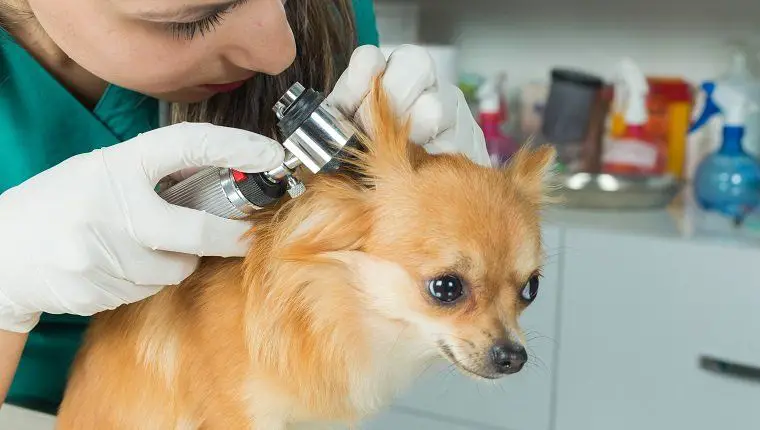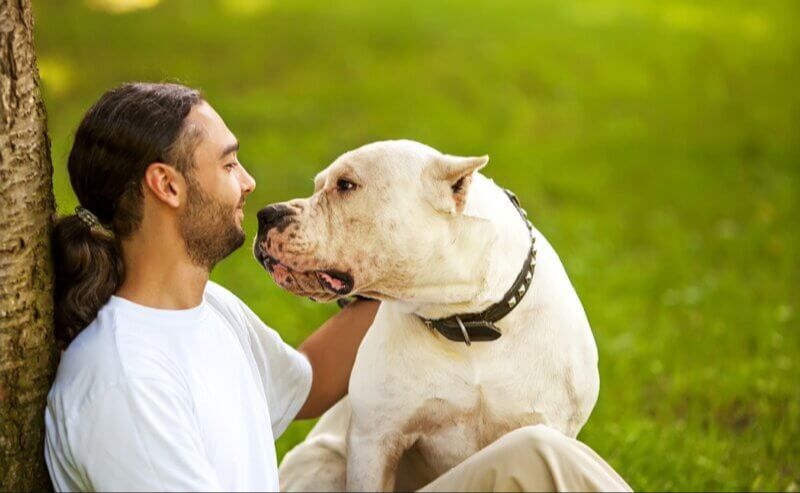Introduction
Dog DNA tests have become increasingly popular over the last decade. These tests allow owners to find out valuable information about their dog’s ancestry and genetics by analyzing their DNA. Dog DNA tests screen for genetic diseases, coat colors, and traits. However, one question many owners have is whether these tests can detect inbreeding in their dog.
Inbreeding is when two dogs who are closely related, such as siblings or parent/offspring, are bred together. This results in offspring who have similar genes from their shared ancestry, including deleterious recessive mutations. Inbreeding increases the chances of genetic disorders and health problems.

This article will examine whether dog DNA tests can reliably identify inbreeding, the limitations, other signs of possible inbreeding, associated health risks, ethical concerns, and how to avoid accidental inbreeding.
Do Dog DNA Tests Check for Inbreeding?
Yes, some dog DNA tests do screen for genetic markers that may indicate inbreeding. Popular dog DNA tests like Embark and Wisdom Panel both test for genetic diversity and the potential presence of deleterious recessive mutations which can signal inbreeding.
For example, Embark’s dog DNA test specifically tests for genetic diversity and looks for areas of the genome that indicate low diversity. The lower the genetic diversity, the more likely inbreeding may have occurred. Wisdom Panel also tests for over 100 genetic mutations linked to disease that commonly occur in dogs from highly inbred lineages.
So while dog DNA tests don’t directly tell you your dog is inbred, they do look for genetic red flags and low diversity that can be caused by inbreeding. Both Embark and Wisdom Panel make it clear in their test results if any markers of potential inbreeding are detected.
How Dog DNA Tests Detect Inbreeding
DNA tests look for long segments in a dog’s genome where both sets of chromosomes contain the same DNA markers. These segments are called “runs of homozygosity” (ROH).
ROHs indicate that an individual inherited identical DNA segments from each parent. This occurs when the parents share common ancestors and therefore have regions of identical DNA themselves. The more related two parents are, the longer the ROH they will pass down. DNA tests calculate the total length of ROHs across a dog’s genome to estimate inbreeding.
The standard threshold for a highly inbred dog is an ROH over 25 million DNA bases long. However, even shorter ROHs can indicate some level of inbreeding. The more numerous and longer the ROH segments are in a dog’s DNA, the more closely related its parents likely were.
While ROHs clearly demonstrate inbreeding, it’s difficult to determine the exact relationship between two dogs based on ROH length alone. But DNA tests can conclusively identify even distant inbreeding by detecting identical ROH patterns inherited from a shared ancestor.
Limitations of Dog DNA Tests for Inbreeding
It’s important to note that current dog DNA tests don’t directly measure inbreeding. Rather, they look for certain genetic markers that are associated with inbred dogs. However, some inbreeding can still be missed by these tests.
DNA tests use SNP chips to analyze different points on a dog’s genome. They look for long segments of homozygosity, where the dog inherited identical DNA from both parents. This indicates inbreeding in the recent ancestry. However, more distant inbreeding several generations back is harder for the test to detect.
Additionally, mild inbreeding between somewhat distant relatives likely won’t produce long enough homozygous segments for the test to flag. So a DNA test may miss cases where distant cousins or other non-immediate relatives were mated.
While DNA tests are a useful screening tool for detecting high levels of recent inbreeding, they have limits. A DNA test that doesn’t find inbreeding markers cannot guarantee a dog has zero inbreeding. Other clues, like health and physical issues, are still important to consider.
Other Signs of Inbreeding in Dogs
In addition to DNA tests, there are some telltale physical and behavioral signs that may indicate a dog is inbred:
-
Physical abnormalities – Inbred puppies often have over or underbites, cleft palates, heart defects, joint deformities, skeletal abnormalities, eye problems, and other issues caused by recessive genetic mutations becoming expressed.
-
Smaller litter size – Inbred dogs tend to have smaller litter sizes and higher rates of stillborn puppies or puppies that die shortly after birth.
-
Lower fertility rates – Male and female dogs who are inbred may have reduced fertility and trouble conceiving and carrying litters to term.
-
Shorter lifespan – Due to higher rates of health problems, inbred dogs tend to have a shorter than average lifespan compared to the breed.
-
Cognitive issues – Inbred dogs often have lower intelligence, difficulty training, increased anxiety and fearfulness.
-
Aggression issues – Lack of genetic diversity can cause increased aggression toward people and other animals.
While not definitive proof, the presence of certain physical abnormalities along with anxiety and aggression issues may indicate a dog is inbred. Consulting with a veterinarian can help diagnose and manage any health issues that arise.
Health Risks of Inbred Dogs
Inbreeding significantly increases the risk of genetic health problems and disorders in dogs. When closely related dogs are bred, they pass on doubled-up copies of detrimental genes which can lead to devastating effects.

Some common health issues seen more often in inbred dogs include:
- Heart defects like mitral valve disease
- Cancers like lymphoma, mast cell tumors, and osteosarcoma
- Autoimmune disorders affecting the skin, joints, blood, and other body systems
- Hormonal problems like hypothyroidism and Addison’s disease
- Respiratory issues like laryngeal paralysis
- Digestive troubles like exocrine pancreatic insufficiency
- Bone and joint diseases like hip dysplasia
- Blood disorders like Von Willebrand disease
- Neurological conditions like epilepsy and dementia
- Eye diseases like progressive retinal atrophy, cataracts, and glaucoma
The defective genes behind these disorders are propagated and amplified when closely related dogs are mated. Inbreeding stacks the deck against the health of puppies.
Ethical Concerns of Inbreeding Dogs
Inbreeding dogs raises significant ethical concerns, especially when it comes to irresponsible breeding practices. Reputable breeders and veterinary professionals strongly advise against mating closely related dogs due to the health risks. However, some breeders, especially unethical puppy mills, will intentionally inbreed dogs to produce puppies quickly for profit. This prioritizes money over the puppies’ health and wellbeing.

Responsible breeders follow guidelines to minimize inbreeding and genetic defects. They carefully select sires and dams from unrelated bloodlines, maintain detailed pedigree records, and test breeding candidates for inheritable diseases. Their top priority is improving the breed’s health, not cutting corners for quicker profits.
In contrast, puppy mills often repeatedly breed close relatives with little concern for the offspring. Puppies from these operations frequently suffer from physical and genetic problems due to minimal genetic diversity. The parents themselves are also likely to suffer from poor health and living conditions. These unscrupulous breeding practices have rightly come under public scrutiny and backlash.
In summary, while limited inbreeding can occur even with responsible breeding, mass-producing puppies from closely related dogs raises serious ethical concerns. Reputable breeders take great care to balance genetic diversity with maintaining breed standards. But puppy mills prioritize profits over puppy health and wellbeing, with heartbreaking and unethical results.
How to Avoid Inbred Puppies
Responsible breeders should take steps to avoid inbreeding in their dogs. While linebreeding (mating of dogs that share common ancestors) can be done carefully, close inbreeding should be avoided.
Breeders should research pedigrees and perform genetic testing to understand potential health and temperament issues. Outcrossing to unrelated lines can increase genetic diversity and hybrid vigor. Some breed clubs even provide an inbreeding coefficient based on pedigree analysis.
For buyers, carefully research breeders and ask about genetic testing results. Responsible breeders will test dam and sire for breed-specific issues before breeding. Avoid breeders who routinely inbreed or offer multiple litters from sibling or parent-offspring matings.
Visiting the breeder’s facility allows you to meet the puppy’s parents and see their condition. Be wary of breeders who will not let you do this. Ask for proof of health testing and pedigree information.
Avoid purchasing puppies from pet stores or online ads, as their breeding backgrounds are unknown. Instead find a responsible breeder focused on health and temperament, not just looks or profit.
With due diligence, buyers can find puppies from merit-focused breeders with diverse, health-tested lines. While no mating is guaranteed to be foolproof, careful breeding helps stack the odds in favor of a healthy, well-tempered companion.
What to Do If You Have an Inbred Dog
If you suspect or know you have an inbred dog, the most important thing is to have them thoroughly health screened. Since inbreeding increases the chances of genetic defects and disorders, it’s crucial to identify any issues early so they can be properly managed.
Schedule a vet appointment and request a complete physical exam, bloodwork, urinalysis, and genetic screening. Testing for issues common in the breed, like hip dysplasia in larger dogs, is especially recommended. Ongoing annual screening can catch developing problems.

Provide extra attentive daily care for an inbred dog. Feed a high-quality diet and keep their weight optimal. Brush their teeth and clean their ears regularly. Exercise them daily but avoid overexertion. Monitor for any emerging health or behavioral concerns and address them promptly.
Inbred dogs may need medications or supplements to manage conditions. Be vigilant about giving prescribed treatments. Adapt their environment to accommodate any disabilities. Enroll them in rehabilitation programs as beneficial. Overall, just provide the extra love and care an inbred dog requires to live their best life.
Conclusion
In summary, DNA tests can be used to detect signs of inbreeding in dogs if you know what markers to look for. However, these tests have limitations and cannot catch all instances of inbreeding. It’s important to use DNA tests responsibly along with other methods to screen breeding dogs. While some inbreeding may be unavoidable with purebreds, breeders should strive for genetic diversity and avoid close inbreeding which puts dogs at risk.
Breeding related dogs comes with serious ethical concerns, as it often compromises the health and wellbeing of offspring. If you have an accidental inbred litter, provide extra medical care and monitoring. Going forward, learn how to carefully select unrelated dogs from health-tested lines. With responsible breeding practices, we can reduce inherited diseases and give our canine companions the best chance at a long, healthy life.